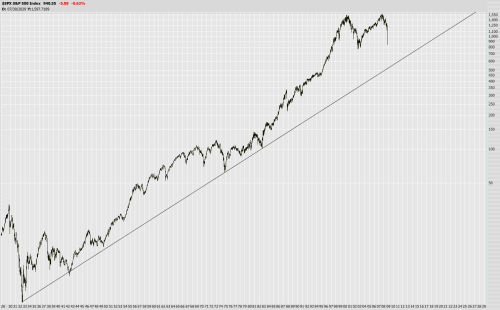Volatility is not risk; still water does not imply a lack of crocodiles.
With plenty of people angry about the auto-maker bailout, I’m personally disappointed that the terms of the deal were not also applied to the TARP. It’s generally a good deal, unlike the windfall of un-encumbered cash the financials got to spend on bonuses and buyouts.
In the next few days, probably sometime next week, I will likely open some long positions in the market. I expect to hold them for a few months at most. There are signs that the market is finally ready to put in a solid rally, and it should be nice and vicious. A stretch goal for this would be 1200 on the S&P 500, but 1100 or 1150 should be easily reachable.
I’m also seeing good arguments for a much lower target for this market. For anyone who didn’t do the math, the traditional bottoming PE of 7, applied to the S&P, would suggest a value around 425. Russell Napier looks at Tobin’s Q ratio to suggest a bottom at 400 around 2014. (In the article a Mr. Brusca feels that this argument is dependent on deflation taking hold, an outcome he feels incredibly unlikely. I point this out because my expectation has been, and continues to be, for deflation. We have experienced the largest credit bubble in history, and as it bursts, trillions of dollars in “wealth” will evaporate from the system.) 400 is an awfully steep decline, but if you take another peek at the S&P long-term chart displayed a few posts back, a nice bear market rally approaching 1200 would put in a very nice right shoulder to form a massive head-and-shoulders pattern with a target around 400. Astute readers will note that Mr. Napier suggests the Fed’s attempts to fight deflation could produce a significant rally (a year or two), much longer than I’m currently expecting, but perfectly in line with such a scenario.

